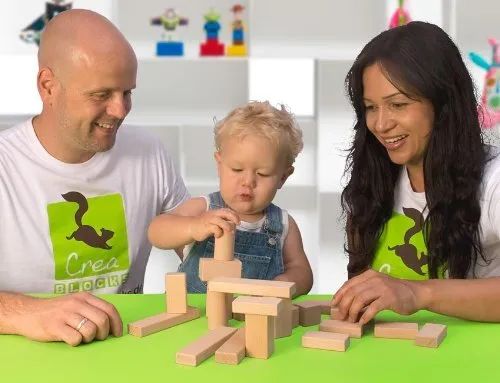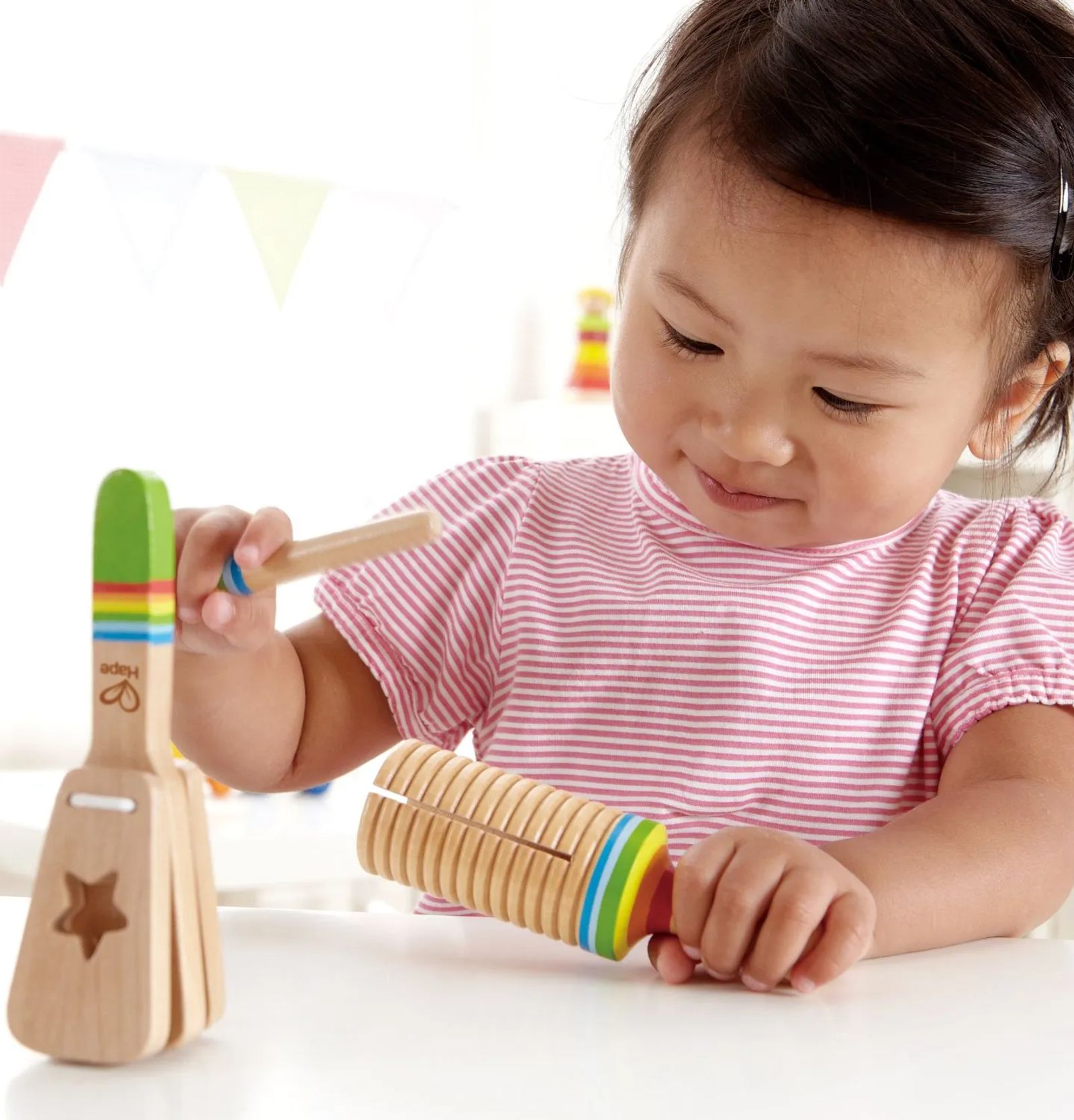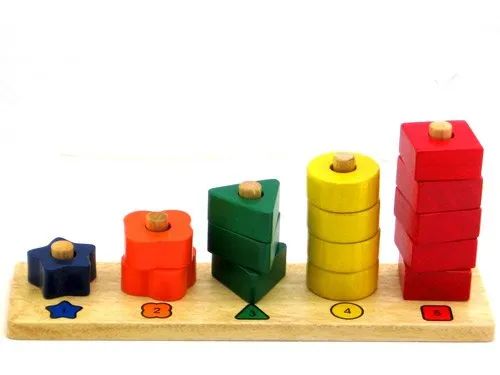What to Buy an Expecting Montessori Mom: 4 Great Gift Ideas
Montessori Moms (and Dads) likely want a baby shower just like everyone else. However, they often don’t want the same old toys and gifts as everyone else. Many Montessori parents are joining a movement of providing a Montessori environment in their homes, to support the development of their growing little ones. So, for friends and family of expecting Montessori parents, here is a list of the top 4 gift items to support a baby/toddler Montessori environment at home:
1) Clean, simple wooden blocks, puzzles, and toys  Image from Amazon.com
Image from Amazon.com
Some great examples can be found at Montessori-on-a-budget.com. Many baby/toddler toys today are made of plastic and have music or lights that turn on during play. Montessori education strives to enrich a child's mind through self-directed play. Wooden and more neutral toys (those that don't have just one function of flashing or making music) allow the child's mind more creativity to decide if this object is moving, still, stacked, sleeping, singing, etc. The child's mind gets to make the determination, not the toy. Therefore, there is so much more versatility with simple wooden toys. Some great places to buy such wooden toys: oompa.com, Michaelolaf.com and Alisonsmontessori.com.

2) A display bookcase and low shelving  bookshelf
bookshelf
Books are another key staple in the Montessori-at-home learning environment and it is invaluable to find ways that books can easily be explored and put away. When books are displayed in a library style book case where the book covers are visible (instead of all stacked in a basket), children are often more attracted to them and interested in choosing a book to read. In addition, Montessori principles strive to teach children how to put away the toys after using them, and the stand-up style is much more user-friendly than trying to squeeze a book sideways into a bookshelf. If you can't purchase this large of an item, you could offer to DIY a similar style of shelving for your friend. Here are several tutorials on how to make a shelf yourself.

Another piece to the storage of items is low shelves for children to put their toys as opposed to a toy box. When you use shelves it is easy for the child to make choices and eventually learn to put things back where they found them. It is also easier for mom and dad to keep track of what the child is actually using and to avoid the pitfall to too many toys at one time. It is OK to keep some gifts and great toys in a closet and rotate them out periodically so your child has new activities to entice his or her activity.
3) World Music CD's and musical instruments  Image from Amazon.com
Image from Amazon.com
The infant is learning through the sensations, but touch is not the only sense that takes in information. Music is a wonderful aid to an infant's brain, as it helps the child to discriminate different sounds. Look for CD's that have a variety of songs: drumming, guitar, piano, etc. Exposing the child to music from around the world can help them to have more varied exposure, and thus trigger the development of more cognitive discrimination (which leads to aspects of our intelligence). Music is a great tool to help establish calm times as well. Look for classical music featuring largo movements and adagios.

And of course involving the child in creating the music makes this experience even more enriching. Kidshealth.org tells us that between the ages of 1 and 3, kids respond best to music when they actively experience it. Very young toddlers will enjoy instruments they can shake — bells, rattles, shakers, tambourines, or rain sticks. Some great eco-friendly music instruments appropriate for toddlers can be purchased at Lilsugar.com
4) Push/Pull/Pour/Stack toys.  Image from Ecotoys.com
Image from Ecotoys.com
Movement is as necessary to a child's development as good nutrition. Through pushing, pulling, pouring and stacking objects, the child learns about cause-and-effect, gravity, and the various interactions of size and shape. For example, the concept of square is more easily grasped by holding a square and putting it into a square hole. Similarly, a child learns how round objects are different from square ones by noting how they roll forward and back. And even further, the child gets to learn to regulate their body movements as they experiment with pushing, pulling, pouring or stacking objects. You can purchase stackables at Ikea or ecotoys.com and sensory balls at Geniusbabies.com.





















